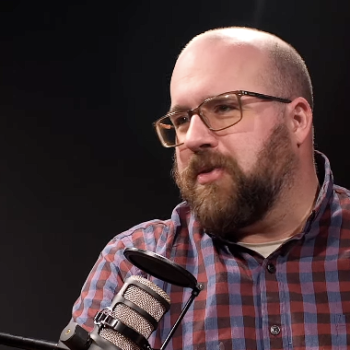Discovering The Prayer Wheel
Eliza[1] works as a research associate at a start-up. She attends church nearby, where she generally enjoys the teaching and the music, and has good friends. If asked, Eliza would say she’s growing in her faith. But like so many, she might also admit that she struggles with prayer.
It used to be simple. As a child, and even through college, she prayed the way her parents taught her. But lately, she seems to have lost her voice. Should she pray spontaneously, just saying what’s on her mind? Stick with the written prayers of the Church? Sit in silence? She’s tried several approaches, some of which at least raised a spark. But nothing keeps her coming back.
Yet doing nothing would feel like abandoning her soul. What she wishes for is a prayer practice that’s personal, rich, and rooted. Something that is based deep in the faith but that also grows with her.
Recently, a teaching pastor at Eliza’s church gave her a copy of an intriguing diagram that fit on a single sheet of paper. He called it a “prayer wheel,” and said it was a thousand-year-old aid to prayer. At first, it seemed mysterious—like a message from Middle Earth, or an ancient board game. But in this board game, she soon realized, every move was a prayer. The wheel was packed with big ideas, but using it wasn’t hard to learn. And the more she has used it, the deeper she feels drawn into her faith and an ongoing conversation with God.
The wheel is made up of concentric bands, like a target. Curving outside the outermost band is the sentence: “The order of the diagram written here teaches the return home.” Each of the other bands contains a key Christian text divided into seven phrases. The phrases align themselves in seven spokes that form paths from the wheel’s outer edges to the word “God,” at the center.
Every day, Eliza takes a different path from rim to center. Each phrase is a stepping-stone on that day’s prayer experience. Pausing at each, she lets the meanings and connotations of the path so far seep in.
Phrase by phrase, path by path, prayer is coming alive for Eliza in new ways. She is on a journey that feels new and refreshing—personal, yet rooted in sacred texts and in a praying tradition she has never encountered until now, tested by generations of spiritual pilgrims before her.
For Eliza, as it was for them, the destination is always home, whose name is God.
----
If you wonder why you’ve never heard of this diagram before, it’s probably because until very recently, most of the world had forgotten it.
In 2015, a group of rare manuscripts from medieval monasteries went on exhibit at the New York gallery Les Enluminures. The crown jewel of the collection, originally from an abbey in Liesborn, Germany, was a massive handmade book of the four gospels, created for ceremonial purposes such as the swearing of oaths. With its covers crafted from thick oak, the book was ponderously beautiful. The front cover showed Christ on the cross carved in a stunning relief, surrounded by the medieval symbols for the four evangelists: an angel for Matthew, a lion for Mark, an ox for Luke, and an eagle for John. Inside, the text was handwritten in Carolingian minuscule, part of a family of compact script that influenced the development of modern typefaces. (The book was purchased by the Federal Republic of Germany and is back in the abbey, which is now a museum.)
The volume’s most unusual attribute was a curious circular diagram on a normally blank protective sheet before the title page. The dealer explained that the drawing had been added when the book was more than a century old. Its concentric bands were filled with spidery writing in deepest brown and brightest red. Small crosses stood sentry at the figure’s top and bottom. At the center was the word DEUS—God.
The dealer called it the Prayer Wheel.
Since that introduction, the three of us have tracked the Prayer Wheel and its spiritual significance through libraries and archives, with the help of priests, pastors, and scholars, and with some prayer of our own. The Liesborn Wheel is one of about seventy such diagrams surviving from the Middle Ages, a time when there were hundreds or even thousands of them across Europe. They were part of a larger tradition of using geometric figures to represent Christian truths. The great abbot and theologian Richard of St. Victor called the diagrams a “the third mode of seeing.”
Outside of a handful of academics, nobody seems to have paid attention to the prayer wheels that remain, buried in a few dozen libraries, private collections, and cathedral archives. But the time has come to change that. As the fruit of an era when tumultuous social conditions resulted in a great flowering of devotion, the Prayer Wheel is also well suited for believers today. It was the prophet Jeremiah who urged a nation under great stress to “ask for the ancient paths . . . and find rest for your souls.” The Prayer Wheel shines a light on the old paths to God—and in so doing, can make our praying new again.
2/26/2018 4:55:34 PM




